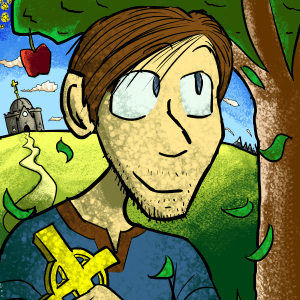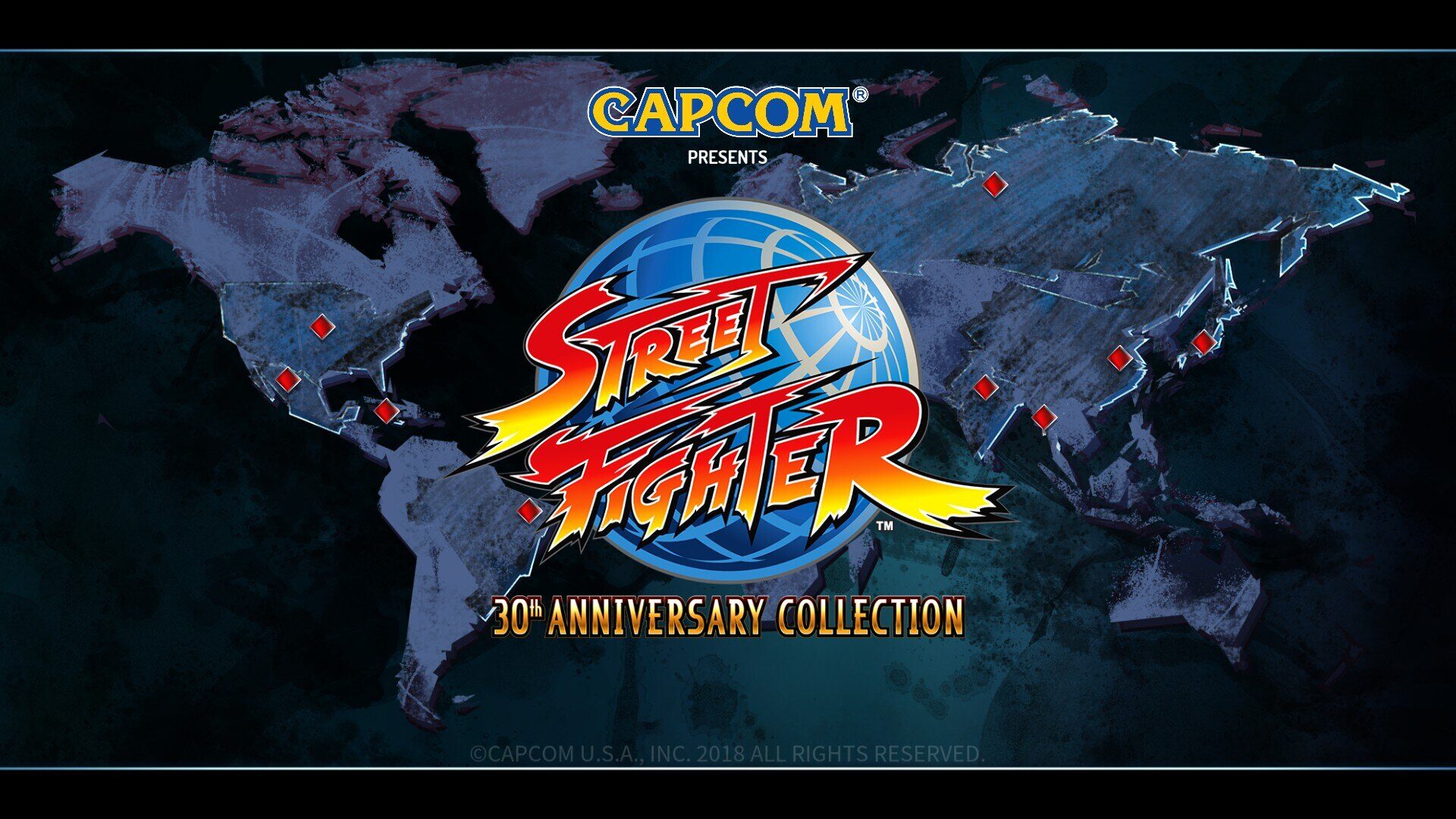
When someone brings up the topic of fighting games, odds are the first game they’re going to think of is Street Fighter. The series absolutely dominated the arcades throughout the 90s and set the bar for every other fighting game that followed in the wake of its success. In celebration of its 30th anniversary in 2018, Capcom released the Street Fighter 30th Anniversary Collection, a compilation of the series’ 12 most important arcade releases. The games included in the collect are Street Fighter, Street Fighter II: The World Warrior, Street Fighter II’: Champion Edition, Street Fighter II’ Turbo: Hyper Fighting, Super Street Fighter II: The New Challengers, Super Street Fighter II Turbo, Street Fighter Alpha: Warriors’ Dreams, Street Fighter Alpha 2, Street Fighter Alpha 3, Street Fighter III: New Generation, Street Fighter III: 2nd Impact – Giant Attack, and Street Fighter III: 3rd Strike – Fight for the Future. It’s quite a lengthy anthology, but does the series still hold up today?
In this review I will give my in depth thoughts on every game included in the collection, but before I do so I want to touch on some general information as well as the extra bells and whistles included in this package. Every game is true to the original arcade version, for better and for worse. None of the hardware compromises of home consoles like the Super Nintendo or Sega Saturn are present, but arcade games like these were designed to make your pockets bleed quarters so computer controlled opponents are often frustratingly hard to play against with inhuman reaction times and flawless combo executions (You might want to write this bit down because it’s going to come back to haunt us later). Fortunately you are able to use as many continues as you like, change the difficulty of each individual game when selecting it, and even create save states if you can’t/don’t want to clear a game in one sitting. There is also a gallery mode where you can view character bios, animations, concept art, music, and a timeline of the series’ full history. It’s nothing too fancy, but it’s a fun addition nonetheless.
Lastly the game also offers training mode and online play, but only for Street Fighter II’ Turbo: Hyper Fighting, Super Street Fighter II Turbo, Street Fighter Alpha 3, and Street Fighter III: 3rd Strike – Fight for the Future. It’s baffling to me that only 4 out of 12 games in the collection have training modes, as it’s an excellent tool for trying out new characters and learning to do combos so limiting its use like this feels like a huge missed opportunity. But if you think that’s bad, the online is even worse. The servers use outdated and unreliable netcode that’s so laggy it’s borderline unplayable in the majority of matches. Don’t even bother trying to put up with the online mode and just stick to local multiplayer. With that out of the way it’s finally time for my in depth review of all 12 games, so wish me luck because I’ll need all of it if I’m going to go the distance.
Street Fighter (1987)
Probably one of the most amazing things about the Street Fighter series is that sequels were even made after the first game, because oh man, the original is really bad. The player takes control of the iconic series poster boy Ryu and fights their way through the first world warrior tournament in order to defeat the muay thai champion Sagat, the strongest fighter in the world. In multiplayer a second player will take control of Ryu’s best friend and rival Ken who shares all of Ryu’s moves and abilities with the differences between the two being purely aesthetic. It’s a very basic premise with a paper thin story which isn’t offensive considering the time it was made, but it definitely won’t drive you to see the game through to the end.
On the gameplay side of things, Street Fighter has all the foundational elements seen in its successors such as 6 buttons that correspond to 3 punches and 3 kicks each with a strength of light, medium, or heavy. There’s also blocking, crouching attacks, jumping attacks, 3 jump arcs, and special moves executed by command inputs on the control stick in combination with punch and kick buttons. It all sounds good on paper, but in practice it’s absolutely terrible. Moving and jumping is slow and awkward, attacks have a strange delay that makes them feel unresponsive, and good luck trying to throw a Hadouken because special moves are so hard to execute that they’re almost not worth using. All of this combined with ugly visuals and ear grating audio makes the original Street Fighter an abysmal experience. Unless you enjoy bad games ironically play literally any other game in this collection.
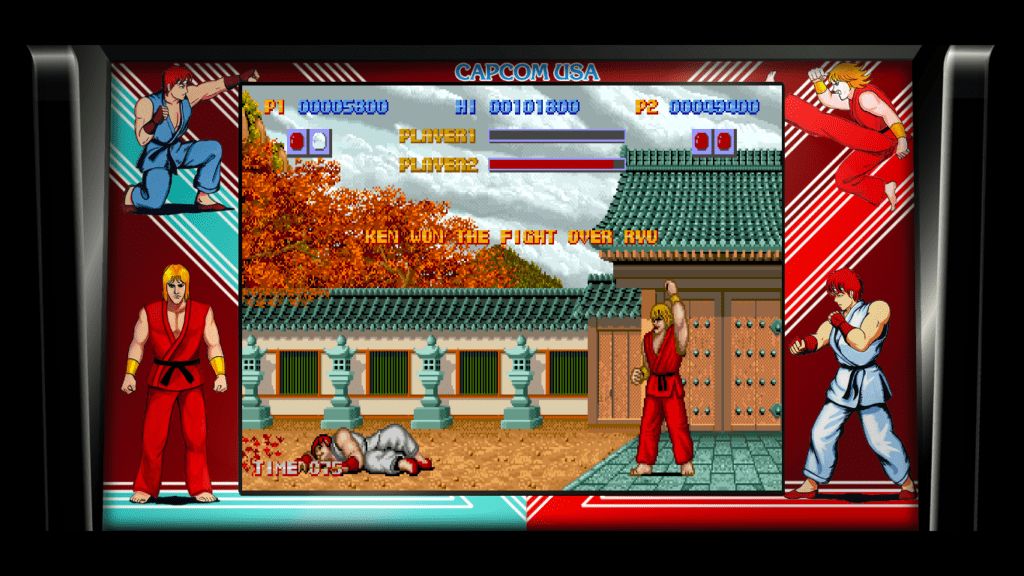
Street Fighter II: The World Warrior (1991)
The genre defining game that made Street Fighter a household name. Street Fighter II: The World Warrior is astronomically better than its predecessor in every way. The roster has been expanded to include 8 playable characters with the introduction of series icons like Chun-Li, Guile, and Zangeif. The game’s story once again centers around an international fighting tournament, this time hosted by M. Bison, the evil dictator of a drug cartel/crime syndicate known as Shadaloo. While the setup is admittedly a little goofier than the first game and is by no means an exceptional narrative, every character has a unique backstory and playstyle that affects the story’s conclusion which adds a little extra incentive to play the game with different fighters. I also want to give special mention to the game’s soundtrack which was composed by the now industry veteran Yoko Shimomura and it really shows as each song is incredibly memorable. No surprise that these songs are still being used in Street Fighter games to this day.
Street Fighter II retains many of the basic elements of the original Street Fighter, but it has been vastly improved and expanded across the board. Basic actions such as attacking and moving actually feel responsive and special moves have been made much easier to perform. Street Fighter II also introduced grabbing attacks which can be used to punish excessive blocking. The biggest and most influential change however, is the ability to cancel attack animations in order to string multiple attacks together and perform a combo, a feature that would become a staple of the genre moving forward. The only real complaints I have regarding the gameplay come from the benefit of hindsight, such as the fact that two players cannot fight each other using the same character or how the newcomers only have two special moves each. It’s just weird not being able to have mirror matches or use moves like Chun-Li’s Kikoken or E. Honda’s Sumo Smash. Grievances aside, Street Fighter II is rightfully an all time classic with its distinct characters, tight gameplay, and legendary soundtrack. It’s a landmark in gaming history and absolutely a worthy addition to the collection.
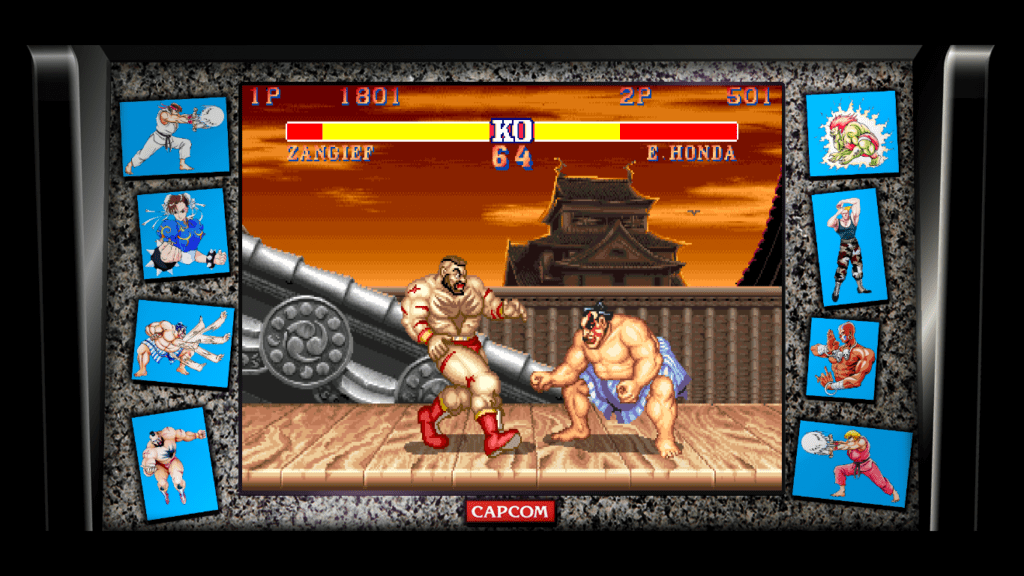
Street Fighter II’: Champion Edition(1992)
Before the days of expansions and downloadable content, when a game was given a major content update in the arcades it was often rebranded almost as if it was a new release to keep customers coming back to the cabinet. After the unprecedented success of Street Fighter II, Capcom was more than eager to take advantage of their considerable audience by releasing Street Fighter II’: Champion Edition. The biggest addition this version of the game brings to the table is the introduction of the game’s four boss characters Balrog, Vega, Sagat, and M. Bison as playable characters, albeit toned down to be more balanced when competing against another player.
Speaking of competing against other people, two players can now choose the same character in versus mode. So when your buddies start gloating about their unparalleled Blanka skills you can challenge them to a mirror match and find out who’s the REAL best Blanka on the block. The existing roster has also received some balance changes. Ken is particularly noteworthy in this regard as his special moves have been adjusted to differentiate him from Ryu, finally becoming more than just a pallet swap. Beyond the gameplay not much has changed except for some minor visual polishing such as a few redrawn ending cutscenes. With all of this in mind, Street Fighter II’: Champion Edition is indeed a superior version of Street Fighter II, but I would argue it’s not a substantial improvement. Between the two games I would probably play Champion Edition over The World Warrior, but the differences aren’t big enough to create a drastically different experience.
Street Fighter II’ Turbo: Hyper Fighting (1992)
Now here’s a fun story. A hacked version of Street Fighter II’: Champion Edition known as “Street Fighter II: Rainbow Edition” was created that sped up the pace of the gameplay and became very popular despite being incredibly unbalanced. Capcom quickly realized they had to compete with this high speed hack and less than a year later Street Fighter II’ Turbo: Hyper Fighting was born. The faster pace makes each match more exciting than ever before. It also made special moves a little harder to do with stricter timing on button presses, but it’s less frustrating than it sounds. Plus some special moves can now be used in mid air which is super fun.
Beyond the game’s pacing, the developers also took the opportunity to give some of the characters that had limited movesets brand new moves to compensate for some of their shortcomings, finally giving characters like Chun Li and E. Honda those useful moves I mentioned earlier. The characters also have new default color pallets to give the game a little more visual distinction from its predecessors. The changes made in Street Fighter II’ Turbo: Hyper Fighting are the first big step up in the series since the jump from Street Fighter to Street Fighter II. The faster pace and new special moves change the way the game is played significantly and is easily one of the best games available in the anniversary collection.
Super Street Fighter II: The New Challengers (1993)
With the Street Fighter II brand showing no signs of slowing down, Capcom debuted its new CPS-2 arcade board with the release of Super Street Fighter II: The New Challengers. Using this new hardware the game was given a big audio and visual update. Characters and stage backgrounds were redrawn, recolored, and given brand new animations. Music, voice lines, and sound effects were also re-recorded and enhanced. The game also introduced 4 brand new playable characters, Cammy, Dee Jay, Fei Long, and T. Hawk, bringing the total roster up to 16 fighters. Existing characters saw more balance changes and a few got even more special moves.
With so many changes and updates it sounds like this version of Street Fighter II must be the best one yet, right? Well, despite all the steps forward there is one significant fall back. Super Street Fighter II drops the faster game speed introduced in the previous iteration and feels a lot closer to Champion Edition as a result. This doesn’t make the game bad per say, but considering how good Hyper Fighting’s faster pace was, the omission here feels extremely strange. With all of this in mind I can confidently say that Super Street Fighter II: The New Challengers is the best version of Street Fighter II that doesn’t have the word Turbo in the title. It’s still fun to play, but just barely misses the mark of being a truly exceptional fighting game.
Super Street Fighter II Turbo (1994)
The final version of Street Fighter II to be released in arcades, Super Street Fighter II Turbo was released only a few months after Super Street Fighter II and brings the game’s speed back up to the pace of Hyper Fighting and gives every character even more brand new special moves, once again shifting the game’s balance. Alongside these expected changes there are also some new mechanics that further deepen the core gameplay. Players can now defend themselves against being thrown using “throw techs” which is helpful if the opponent frequently goes for grabs. Players can also perform launching attacks which can be followed up with jumping attacks to create an air combo. The game also introduces the super gauge, a bar that players fill up by attacking their opponent, when full they can unleash their character’s super attack using a special input command. On top of all this Super Turbo introduces a secret boss character named Akuma, a black clad warrior with a super powered version of Ryu and Ken’s fighting style, who is fought by reaching certain conditions during arcade mode and can be played as by inputting a special passcode on the character select screen. Fair warning though, play as Akuma and you WILL lose all of your friends.
Looks like Street Fighter II must have finally reached its full potential! I shouldn’t have anything to complain about this time, right? …Well, do you recall when I told you to remember the bit about the insanely hard computer AI in single player mode? Here’s where it pays off. When Super Turbo first released it had a programming error that made the AI pretty much impossible to fight on any difficulty setting. Capcom responded to this by sending out an updated rom to the arcades in order to make the game more fair. However, the rom used in the Street Fighter 30th Anniversary Collection is based on that initial rom containing the error with no signs of any fix coming anytime soon which is absolutely inexcusable in the age of the internet. It’s a shame really, I wanted to give Super Street Fighter II Turbo the praise it deserves because in multiplayer it’s an absolute joy to play, but with that unplayable single player mode I have to be objective and criticize it accordingly.
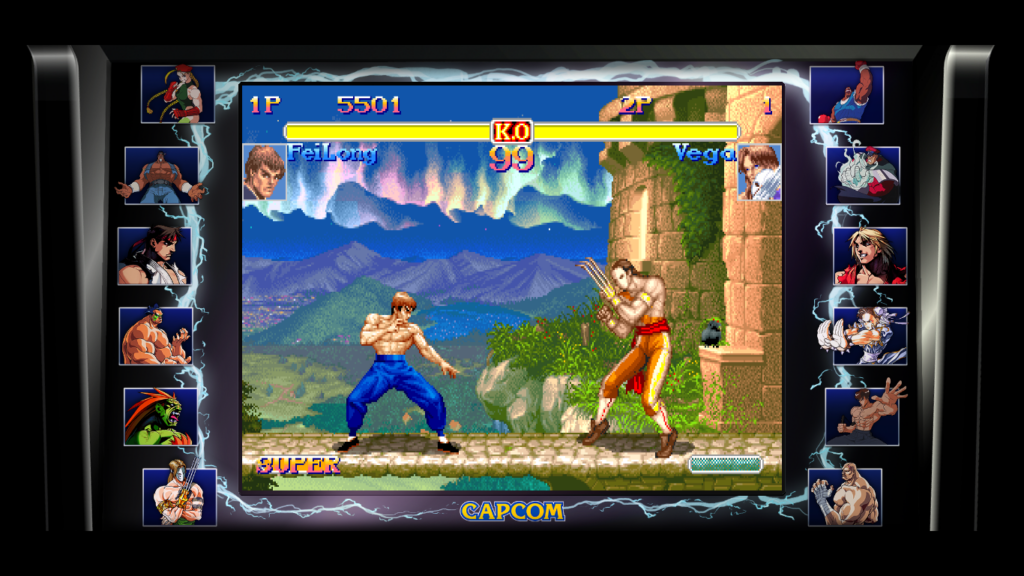
Street Fighter Alpha: Warrior’s Dreams (1995)
After 4 years of reiterating on Street Fighter II we finally have a totally brand new Street Fighter game! Street Fighter Alpha: Warrior’s Dreams is a prequel set between the events of the first Street Fighter and Street Fighter II with a new artstyle similar to Japanese comics and cartoons. The overarching story of the game revolves around M. Bison and Shadaloo’s rise to prominence rather than a fighting tournament which is a nice change of pace, but each character still has a unique ending centered around their backstory and motivation which is made doubly apparent by the fact that M. Bison isn’t the final boss for certain characters. Returning characters from Street Fighter II like Ryu and Chun Li are noticeably younger and wear different outfits, and characters from the first Street Fighter such as Adon are made playable for the first time. There’s also a few new faces on the roster including a few crossover characters from Street Fighter’s sister series Final Fight like Guy and Sodom. My only issue with the roster is the fact that it only has 10 characters which feels like a big step back from previous titles, but considering the fact that each one had to be animated from the ground up for the new artstyle does make it somewhat understandable.
Street Fighter Alpha expands on the gameplay by adding lots of brand new mechanics that create interesting new strategies. The super meter now has 3 bars which can be saved up to make super special moves more powerful and each character now has multiple super moves for different situations. Players can also spend their super meter to perform an Alpha Counter while blocking, useful for getting back on the offensive. Other universal changes include blocking while jumping, which is pretty self explanatory, along with chain combos, a mechanic from another Capcom fighting game series called Darkstalkers which allows for easier combos by simply performing light punches and kicks into medium and heavy punches, kicks, and special moves without any strict timing. While most of these mechanics do succeed in making a more in-depth fighting system, chain combos in particular are a little too strong for their own good at times. Overall, while I don’t think Street Fighter Alpha: Warrior’s Dreams is a perfect game, it’s still quite good and definitely worth playing.
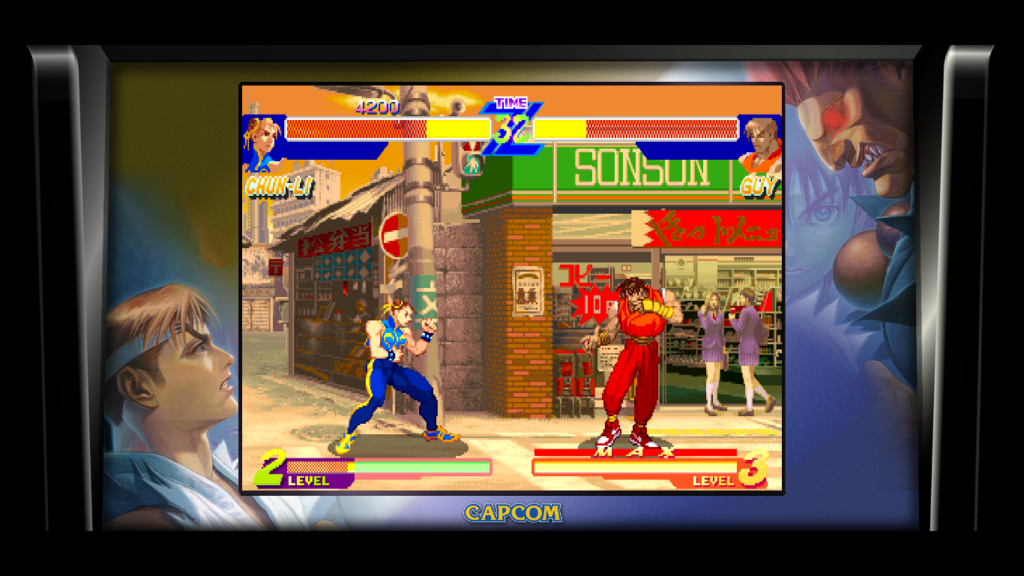
Street Fighter Alpha 2 (1996)
It’s amazing how with just a few tweaks here and there a good game can become a great one. Street Fighter Alpha 2 is a retelling of the first Street Fighter Alpha rather than a direct sequel. All the characters from Alpha 1 return with the 3 boss characters, M. Bison, Akuma, and Dan rebalanced and selectable without the use of cheat codes. The game also brings back Dhalsim and Zangeif from Street Fighter II. The newcomers include Gen, Rolento, and Sakura which brings the roster up to 18 fighters, the biggest selection in the series yet. Along with all the great background stages and music there’s definitely a lot of content to sink your teeth into with this one.
Many of the mechanics introduced in Alpha 1 return with the exception of chain combos which have been replaced with custom combos. Custom combos cost a portion of the super gauge and allow the player to use any combination of punches, kicks, and special moves in quick succession for a limited amount of time. This change maintains the strategic freedom of the previous title while also reworking the more extreme aspects of it’s design for a more balanced experience. It should come as no surprise then when I say this is one the best Street Fighter games ever made. It’s a game that instantly feels great as soon as you pick up the controller. Street Fighter Alpha 2 is a truly special experience and I can’t recommend it enough.
Street Fighter III: New Generation (1997)
Capcom, having recently developed the CD-ROM based CPS-III hardware capable of even more elaborate graphics than ever before, decided it was high time they released a sequel to the much beloved Street Fighter II. Street Fighter III: New Generation features a roster of almost entirely brand new characters like Alex and Dudley along with the return of Ryu and Ken because the total lack of veteran fighters in early development builds didn’t test well with focus groups. The story once again centers around a fighting tournament, this time hosted by Gill, the emperor of the Illuminati with a messiah complex who is searching for humanity’s finest in order to save them from a coming apocalypse and create a grand utopia in its aftermath. It’s an absolutely bonkers storyline compared to even the previous titles, but thankfully the individual character stories often take precedence over the machinations of Gill’s secret society. The game also adopts a very 90’s urban aesthetic with hip hop esque music and crowded colorful stage backgrounds. Personally I don’t find this direction as appealing as the older titles, but I will give credit where credit is due and highlight the excellent character animations which are drawn at a buttery smooth 60 frames per second.
Street Fighter III feels closest to Super Street Fighter II Turbo, but with a few new mechanics. New mobility options such as dashing and super jumps have been added. Super arts are an evolution of the super special move. Each character has three super arts, but can only choose one at a time. When the super gauge is full the player can perform their super art, but certain super arts can fill up the gauge 2 or 3 times so that they can be used multiple times in quick succession. The last big change is the parry system. If a player pushes forward or down on the control stick just as an attack is going to hit them, they will perform a parry, taking no damage and as a result open up the opponent for a counter attack. Parrying is VERY hard to use due to its incredibly strict timing, but when used properly it can be absolutely game changing. Despite all these changes however, the game feels incomplete. Not only is the new roster somewhat small, but many characters feel hindered by a lack of options similar to the original Street Fighter II where they cannot handle certain situations without the special moves they would receive in later installments. Needless to say, Street Fighter III: New Generation struggled to find an audience back in 1997, and to be honest it’s pretty easy to see why with the benefit of hindsight. It’s completely playable, don’t get me wrong, but ultimately there are other, better Street Fighter games to enjoy.
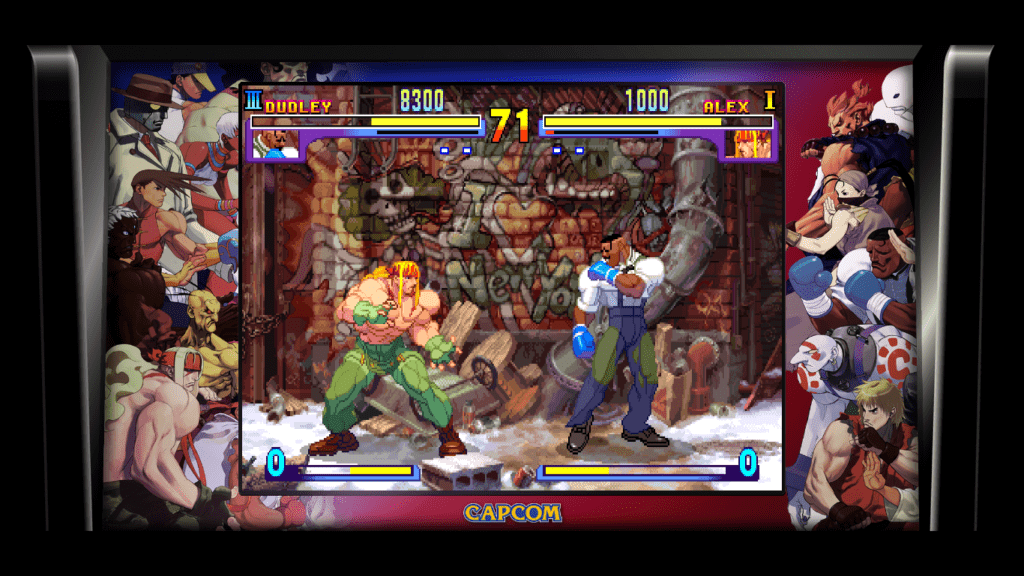
Street Fighter III: 2nd Impact – Giant Attack (1997)
Despite being knocked down after Street Fighter III: New Generation, Capcom apparently didn’t hear the bell because less than a year later they released Street Fighter III: 2nd Impact – Giant Attack. 2nd Impact retcons the events of New Generation and much like Street Fighter Alpha and Alpha 2 the final opponent of arcade mode is character dependent to best fit their personal story arc. The game also adds four more playable characters. Akuma returns from previous Street Fighter games along with the debut of Yang, Hugo, and Urien. The music has been rearranged and the background stages have been redrawn, improving both to the point where I’m not as bothered by the hyper urban aesthetic.
2nd Impact’s gameplay has received a few adjustments that make the game much more enjoyable. Most characters have been given additional special moves that often help alleviate their biggest weaknesses. EX special moves are powered up versions of basic special moves with great utility that consume a portion of the super gauge which creates a more interesting dynamic in how the gauge can be used. The game also adds more functionality to taunting of all things. Whereas before taunts were silly flourishes to mock your opponents, in 2nd Impact they give small bonuses unique to every character such as slightly increasing the super gauge or the damage of your next attack. Overall, Street Fighter III: 2nd Impact feels like the game New Generation always wanted to be. It doesn’t quite stand among the very best the series has to offer, but it’s a good game nonetheless.
Street Fighter Alpha 3 (1998)
Quite possibly one of the strangest games in the collection. I hesitate to call Street Fighter Alpha 3 an update to Street Fighter Alpha 2 as it is a complete overhaul of the Alpha series… kinda. Storywise it’s a little unclear where this game fits into the Street Fighter timeline as some character stories reference the events of Alpha 2 while others seem to completely retcon it. An additional seven characters were added to the roster including Cammy, Blanka, E. Honda, and Vega from Street Fighter II, and newcomers Cody, R. Mika, and Karin. The background stages are as good as they have ever been, but the music was completely reworked with no themes returning from previous titles and unfortunately I can’t say that any of these new tracks are as memorable or interesting as the old ones.
The biggest change in Street Fighter Alpha 3 comes in the form of the “ism” system. When you select your character you also select one of 3 “isms” which drastically changes your playstyle. A-ism is the standard mode of play with balanced stats and the ability to use a variety of super special moves, the most notable difference from Alpha 2 being the inability to perform custom combos. V-ism decreases attack power while increasing speed and defense, custom combos can be used in this mode, but super special moves cannot. X-ism increases attack power while decreasing speed and defense, almost all mechanics unique to the Street Fighter Alpha games like multiple levels of super moves, alpha counters, super jumping, and air blocking are removed in this mode in order to simulate the gameplay of Super Street Fighter II Turbo as closely as possible. I believe the “ism” system was implemented to make the game a little simpler than the previous games, but overall it just feels extremely limiting not having access to these different techniques all at once, neutering the freedom of strategy that made Alpha 2 so much fun. Alpha 3 also introduces a guard gauge that depletes the more a player blocks attacks and when empty leaves them unable to block. While I don’t think it’s an inherently bad idea as a mechanic used to punish excessive blocking, it feels somewhat redundant since throws already did the same thing. While I can certainly acknowledge that Street Fighter Alpha 3 has a certain appeal with it’s large roster and simplified gameplay; it still feels like a downgrade compared to the absolutely fantastic Alpha 2. It’s certainly worth a try, but your mileage may vary.
Street Fighter III: 3rd Strike – Fight for the Future (1999)
One of the most beloved fighting games ever created. Street Fighter III: 3rd Strike – Fight for the Future continues the story of 2nd Impact and adds five characters to the roster including the return of Chun-Li and the debut of Makoto, Remy, Twelve, and Q. The background stages are more static than they used to be, but are no less pleasing to the eye. The game also implements an ungraded audio system which was used to remaster the soundtrack and re-record character voice lines. Alex finally sounds like a proper New Yorker!
3rd Strike’s gameplay has only received some minor adjustments with the introduction guard parries which allow for parrying after successfully blocking the first strike of a multihit attack and the game’s pacing being made a little faster than 2nd Impact. Anything else the game does differently is just the usual character rebalancing we would expect from an update at this point, but despite having so few technical changes 3rd Strike still manages to be a cut above the rest of the series. Every mechanic feels incredibly polished and every character is really fun to play. I don’t really have much else to say about 3rd Strike other than I strongly recommend you play it if you ever get the chance, the game speaks for itself.
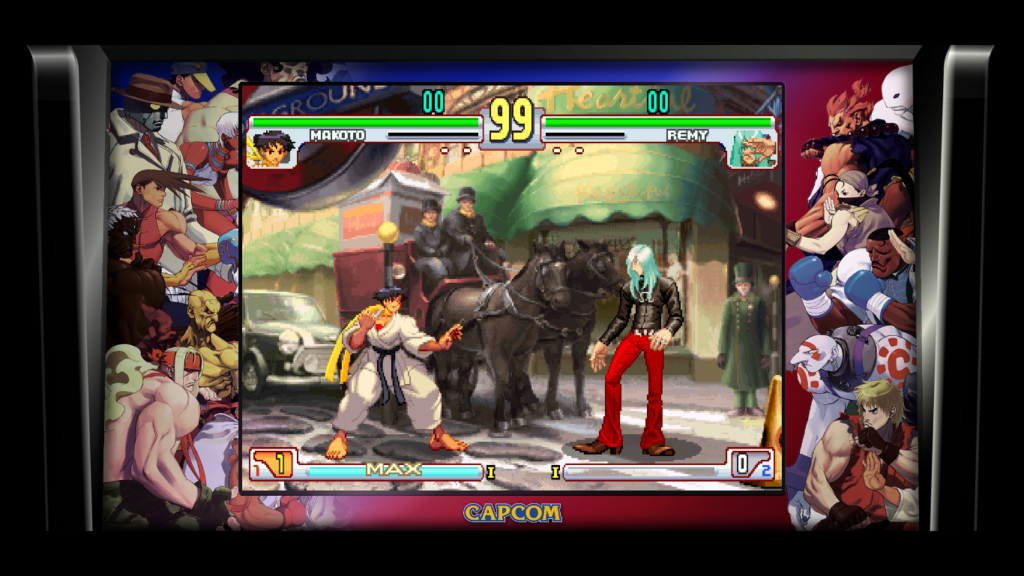
Now that all 12 games have been analyzed, what does a Catholic take away from it all? Well there are plenty of heroic characters from across the series who display good moral virtues such as Ryu’s never ending journey of self-improvement, Guy’s unwavering mission to bring evildoers to justice, and Cammy’s quest for redemption after being freed from her brainwashing. Beyond the stories there’s also a lesson found not only in Street Fighter, but also every fighting game it inspired. Fighting games have a reputation for being difficult for beginners with all the crazy combos and special moves, but many veteran players will tell you it just takes time and effort to get better. I’m sure many Catholics struggle with their faith every now and then, but with even a little time and effort we can strengthen our spirituality and become better Catholics. Whether it’s fighting or faith, you only get out of it what you put into it.
So here we are at the end of this long journey through the history of one of gaming’s most iconic series. It’s a wild ride of ups and downs, but is the Street Fighter 30th Anniversary Collection worth it? To be brutally honest, not really. Sure, games like Hyper Fighting, Alpha 2, and 3rd Strike are fan-freaking-tastic, but since most of the games lack training mode or good online netcode there isn’t much reason to pick up this collection unless you don’t have access to these games otherwise. My advice would be to do what I did and wait for a discounted price because $30 is a little too costly for what this collection has to offer.
Scoring: 65%
Street Fighter: 1/5
Street Fighter II: The World Warrior: 3/5
Street Fighter II’: Champion Edition: 3/5
Street Fighter II’ Turbo: Hyper Fighting: 5/5
Super Street Fighter II: The New Challengers: 4/5
Super Street Fighter II Turbo: 3/5
Street Fighter Alpha: Warriors’ Dreams: 3/5
Street Fighter Alpha 2: 5/5
Street Fighter Alpha 3: 2/5
Street Fighter III: New Generation: 2/5
Street Fighter III: 2nd Impact – Giant Attack: 4/5
Street Fighter III: 3rd Strike – Fight for the Future: 5/5
Additional Features: 2/5
Morality and Parental Warnings
Street Fighter’s gameplay is framed around martial artists competing in one on one combat, but the violence is rarely portrayed as lethal. There are both male and female characters who wear revealing clothing. Many characters use fighting moves akin to super powers, but most are implied to simply be exaggerated martial arts techniques rather than the occult. The few characters I consider exceptions to this rule include Dhalsim’s Yoga (Hinduism), M. Bison and Rose’s psychic powers (Rose is also a fortune teller), Oro’s Senjutsu (Chinese mythology), and Gill, Urien, Necro, and Twelve’s genetic tampering (possibly eugenics). The Illuminati as depicted in the Street Fighter III games is believed to be inspired by the infamous japanese terrorist cult Aleph Shinrikyo.
